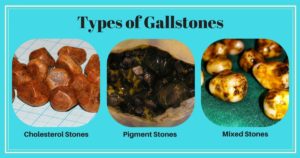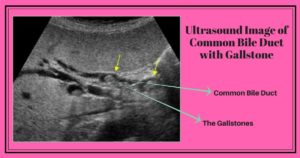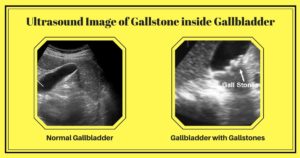What is Gallbladder Removal Surgery?
If the presence of gallstones in the gallbladder is confirmed, the only relief from it is to perform Gallbladder removal Surgery which is termed as cholecystectomy in medical terms. Gallbladder surgery is the common term for this surgery.
What is Gallbladder?
The gallbladder is basically an organ which stores bile in a very concentrated form. The liver produces the bile and stores it in the gallbladder. Bile is a potent digestive juice. The liver produces about 800 – 1000 ml of bile every day. There is a duct that runs from the liver to the duodenum that transports the bile produced. But there is a branch in that duct that branches straight into the Gallbladder. The liver continuously produces bile and when there is no need for bile to reach duodenum it diverts to the gallbladder. The gallbladder then stores the bile in concentrated form.
The Production and Flow of Bile into the Gallbladder
The liver continuously secretes bile. Every day the liver secretes about 800 – 1000 ml of bile. There is a duct that runs from the liver to the duodenum that transports the bile produced. But there is a branch in that duct also that diverts into the Gallbladder. The gallbladder is an organ which stores concentrated form of bile, a potent digestive juice produced by the liver. So the bile secreted by the liver can flow either way into any of the two ducts.
The gallbladder does not always receive bile after production. Whenever a meal is consumed, the bile produced by the liver at that point directly flows into the duodenum of the small intestine.
But when there is no meal consumed (during fasting or in the interval between two meals), the bile continuously secreted by the liver does not flow into the duodenum. Instead, it flows into the Gallbladder. The gallbladder converts the bile into a concentrated form by removing its water content.
The Flow of Bile from the Gallbladder
We consume heavy to a very heavy meal during a festival or feasts. The instances of having heavy meals have actually increased. The heavy meals so consumed may be oily or fatty and may be rich in fat. These are the occasions where the role of gallbladder comes into play. The heavy meal so consumed can be vegetarian too. Even vegetarian food like cheese, avocado, etc., sometimes can be heavy in fat and can warrant the role of the gallbladder in the process of digestion.
During such heavy meals, the duodenum releases a hormone called cholecystokinin. This hormone stimulates the Gallbladder to release the concentrated bile into the duodenum.
Role of Gallbladder in Digestion
An understanding of the function of the gallbladder is necessary to understand why gallbladder removal surgery is the solution for the presence of gallstones.
Whenever we consume a meal, the bile produced by the liver at that point directly flows into the duodenum of the small intestine. But when we don't consume any meal (during fasting or in the interval between two meals), the bile continuously produced by the liver does not flow into the duodenum. But instead, it flows into the Gallbladder which converts it into a concentrated form.
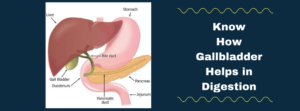 Role of Gallbladder in digestion
Role of Gallbladder in digestion
The important role of Gallbladder comes into play only when we consume heavy meals during a feast or important occasions. And even foods that are fatty and oily, including vegetarian foods. During such times, the duodenum releases a hormone called cholecystokinin which stimulates the Gallbladder. The Gallbladder contracts and releases the concentrated bile into the duodenum.
Bile salts, cholesterol, certain fats and pigments like bilirubin typically make up bile. The bile has two-pronged action in the digestive process. First, the bile salt acts as a detergent on the fatty food and they emulsify the fat present. This emulsification breaks down the fat into small, microscopic fat globules. Second, they act as a carrier of the fat so broken down. The other digestive juices like pancreatic juice help in digesting the fat completely. They aid in making them ready for absorption by the intestinal wall. It may be noted that fat-soluble vitamins are also transported by the bile salts during the digestion process and absorb the intestine.
What are Gallstones?
Gallstones are not stones in a real sense but rather a solid or pieces of solid or lumpy physical structures that may form inside the gallbladder during the process of concentration of bile. Retaining these stones is not a viable option. Since the gallstones cannot be removed, the only other viable option is to remove the entire gallbladder. Gallbladder removal surgery prevents further complications.
The Formation of Gallstones
The gallbladder periodically empties the concentrated bile to remain healthy. But sometimes this does not happen due to unknown reasons. So in other words, Gallstones are formed, if the bile becomes over concentrated and is not drained periodically.
So logically speaking, the chances of gallstone formation is remote if the concentrated bile is draining out periodically. But this logic defies in many instances. When rapid weight loss is achieved, some people develop gallstones in the process. This condition proves the fact that we haven't fully understood the process of gallstone formation.
The Three Types of Gallstones
There are three types of gallstones, the cholesterol stones, the pigment stones and the mixed stones (having both cholesterol stones and pigment stones).
Cholesterol stone of the gallbladder is a direct result of the excess cholesterol in the bile than the required quantity. This excess cholesterol does not drain out of the gallbladder. They solidify further and further only to remain inside the gallbladder to cause the gallstone.
Similarly sometimes when there are some blood disorders, the liver produces more bilirubin. The gallbladder stores this excess bilirubin. The gallbladder is unable to process this excess bilirubin which then gets converted to pigment stones.
Presence of both the above conditions can result in the formation of both the type of gallstones in the gallbladder. Hence the name, Mixed stones.
General Symptoms of Gallstones in Gallbladder
A sudden sharp and radiating pain in the right side of the abdomen.
The pain may last for an hour or more and then subsides. This bout of pain comes and goes frequently.
Vomiting
A general feeling of nausea
Pain after each meal and aversion to fatty food are the general symptoms which make them visit a surgeon.
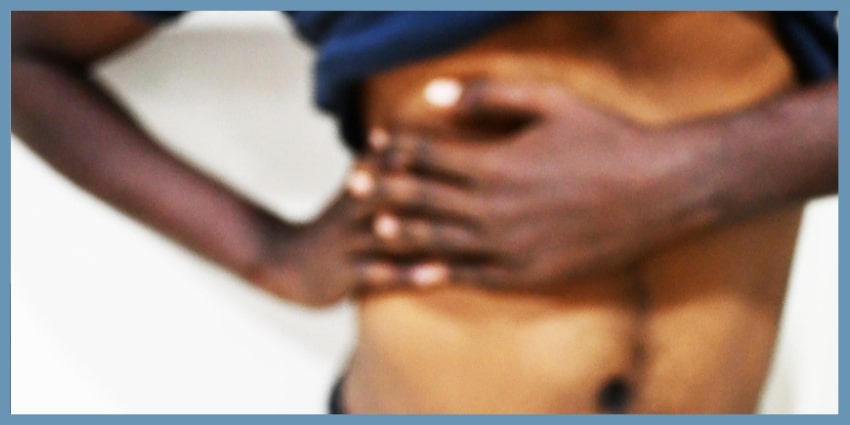
Risk Factors for Getting Gallstones in Gallbladder
There are many risk factors that contribute to the gallstones. They are
– The biggest risk group is women because of the female sex hormones, estrogen, and progesterone. It is said that estrogen increases the amount of cholesterol in the bile. Progesterone slows down the process of emptying the gallbladder.
– Sometimes it may be due to hereditary factor, blame it on your gene
– Being obese definitely poses a greater risk
– Eating more fatty and oily food that is rich in cholesterol
– Rapid weight loss
The FFFF Factor
If you are a Female, Forty Years, Fatty, and Flatulent you may run a higher chance of getting gallstones in the gallbladder. It may be noted that women are 5 times more prone to gallstones than men.
It is said that female hormones, estrogen, and progesterone play a major role in gallstone formation. Dr. Maran, a gallbladder specialist, who regularly performs gallbladder removal surgery in Chennai, talks about the link between the female hormones and gallstones in his video. The link to the video is below. He also has written a brief article on the same and you can find the link to the article here.
Complications of Gallstones in Gallbladder
Gallstones causing Blockage of the Gallbladder neck by Gallstones
The formation of gallstones and the presence of the same refers to Cholelithiasis. Sometimes episodes might occur and they begin to block the neck of the gallbladder. In such a scenario the bile could neither flow in nor flow out of the gallbladder. This condition causes episodes of pain.
Sometimes the gallstone so obstructing the neck of the gallbladder might fall back into the gallbladder once again. Once they fall back the pain might subside. But the mere episode of pain is a warning sign that the gallbladder needs to be removed. The probability of gallstones obstructing the neck of the gallbladder once again is very high. This despite the fact the gallstones have fallen back into the gallbladder.
Sometimes the gallstone so obstructing the neck of the gallbladder might move into the common bile duct. This movement causes the next level of complications.
Choledocholithiasis or Common Bile Duct Stone
As the common name indicates, it is the presence of the gallstones in the common bile duct. This duct is a narrow tube that transports bile from the liver to the small intestine (duodenum). This typically happens when the smaller gallstones (that are notorious) form inside the gallbladder and travels outside and descends into the duct.
This can block the passage of bile and can very well lead to surgical jaundice. This can obstruct the bile flow completely and can cause infection. Once the stone descends down, a simple treatment becomes complicated requiring more than 2 procedures. This can cause an emergency situation with a high mortality rate.
Gallstones causing Pancreatitis
The obstructing gallstone can sometimes further travel down the common bile duct and can get stuck and block the pancreatic duct. This can disrupt the flow of pancreatic juice and can cause pancreatitis.
Gallstones causing Biliary Fistula
The gallstone that has passed into the common bile duct can rarely cause a perforation in the CBD. This can trigger a bile leak which may flow into the abdomen cavity. This is an extremely rare event.
Gallstones causing Duodenitis
The gallstone that has passed into the common bile duct can sometimes flow out inside the duodenum of the small intestine. So literally there is no blockage of the common bile duct or Pancreatic duct. But the gallstones that have gotten inside the duodenum may block the passage of the intestine very rarely.
Gallstones causing Bowel Obstruction
The gallstone that has passed into the common bile duct can sometimes flow out inside the duodenum of the small intestine. Them the gallstones may reach the distal part of the small intestine (called bowel in simple terms). The gallstones that have passed the duodenum may block the passage of the intestine very rarely.
Gallstone Ileus is a rare form of the condition that can cause a sort of paralysis of movement of the small intestine. This is caused by the gallstone that has reached the bowel. The reason attributed is the corrosive nature of the gallstone. The gallstone that has entered can get lodged anywhere in the gastrointestinal tract to cause this condition.
Diagnosis of Gallstones in Gallbladder
A normal abdominal ultrasound or CT scan report is sufficient to diagnose the presence of gallstones in the gallbladder.
If the GI Surgeon suspects that the gallstones have moved out of the gallbladder and are stuck in the common bile duct, then ERCP can be performed. ERCP stands for Endoscopic Retrograde CholangioPancreatography. ERCP is an interventional diagnosing procedure where on identifying the gallstone in the CBD, it can be removed.
How are gallstones diagnosed in the normal course?
In the normal course, gallstones are diagnosed only if they turn symptomatic. That is when patients present with the typical pain symptoms that associate with the presence of gallstones. A sudden sharp, radiating pain in the right side of the abdomen which might last for few hours and then subside only to come back is a typical symptom. Gallbladder surgeons out of their experience can diagnose the symptoms and can trace it to the gallbladder. Doctors will ask for an ultrasound or CT scan report to confirm the seriousness. Ultrasound and CT scan are key to understanding the nature and volume of the gallstones.
If the patient is health conscious and does a mandatory yearly checkup. The gallstones might show up in the gallbladder if they take a full abdomen ultrasound. Yet they might hardly show any symptoms associated with the presence of gallstones. These gallstones that are not typically producing any symptoms refer to as Asymptomatic Gallstones.
More about Asymptomatic Gallstones
Doctors and surgeons advise a patient diagnosed with gallstones and even if it is asymptomatic, to undergo Cholecystectomy as soon as possible. Additionally, doctors ask patients to remain cautious on their diet so that the gallstones present do not turn symptomatic and cause a problem.
Doctors advise these patients to keep an eye on their diet so that the gallstones do not turn symptomatic. However, here is the disclaimer – It is not just the diet that determines the formation of gallstones there are many factors responsible for their formation and diet is one among them. Since diet control is in a patient’s hand they can at least wield influence on this factor. The popular saying goes like, “Diet is the only modifiable factor in any ailments”.
Gallbladder Diet
What Diet should be followed for asymptomatic gallstones?
There is a notion that the consumption of oil and fatty food should be completely stopped so that gallstones problems are not aggravated. Actually, there is no substance to this argument. Remember the body needs good fat.
As a matter of fact, by consuming only foods with healthy fat, the bile in the gallbladder gets used and circulated. So the process of using up the stored bile is necessary for it to not solidify and form gallstones. The key is to strike a balance. Here is a summary of how their diet pattern should be.
Summary of an Ideal Diet Pattern
- As a general rule avoid junk foods and eating out too often. Even if you are eating outside once in a while, look for healthier options.
- Include a liberal amount of fiber in your food. It can be in the form of greens, fibrous vegetables and fruits and complex carbohydrates like millets and hand-pounded rice. The best thing about fibers is they not only slow down the metabolism of carbohydrates, but they also inhibit full reabsorption of bile in the digested food back in the body. This is actually good for the health of the gallbladder as the bile flow is fresh and rejuvenated.
- Severely limit the consumption of desserts, sweets, ice creams, processed fruit juices and adding sugar to home-made fruit juices. Promotes bile stasis – Food high in sugar does not give any role for the gallbladder and hence they cause gallstones.
- Include healthy nuts like badam and walnuts. These nuts supply your body with healthy fat which is essential to keep your bile flow cycle normal and healthy.
- If you are non-vegetarian, you can include lean meat like chicken and mutton.
- As a general rule prefer shallow-fried food to deep-fried foods.
- When it comes to oil or fat, prefer clarified butter or ghee or nei, butter, coconut oil and sesame oil in moderations. The patent must restrict his/her fat intake to 20%-25% of your total calories intake. In this way, you can maintain a healthy diet.
- Drink minimum 6-8 cups of water a day.
- You should either quit alcohol or you should severely limit its intake.
Can you diet for weight loss if you have gallstones?
If you are overweight or obese and have been diagnosed with gallstones, your dieting can very well be on the above lines. Some people prefer diet types like LCHF (Low Carb High Fat). The important point to emphasize is being loyal to whatever healthy diet pattern you are following. Never quit and resume dieting according to your whims and fancies – just be consistent. But extreme dieting like a warrior diet in some diet plans should be avoided if you are diagnosed for the presence of gallstones. It is not worth taking any risks. Keep in mind that your weight loss has to be gradual.
Surgical Treatment for Gallstones in Gallbladder
Surgeons recommend Gallbladder removal surgery or cholecystectomy as an option if the presence of gallstones in the gallbladder. This surgery commonly refers to gallbladder surgery. The gallbladder removal surgery is a general measure to avoid all the complications arising out of the presence of gallstones in the gallbladder. Once gallstones are formed inside the gallbladder the best option is to remove the gallbladder.
Sometimes gallbladders also develop certain ailments or diseases. This is independent of the gallstone 30problem. Whatever may be the problem, gallbladder removal surgery is the recommended solution.
Cholecystectomy or gallbladder removal surgery is done using laparoscopic procedures.
If the gallbladder causes any of the other outlinedcomplications, the GI surgeon or the Gastro Surgeon surgically treats the complications and then proceeds to removes the gallbladder.
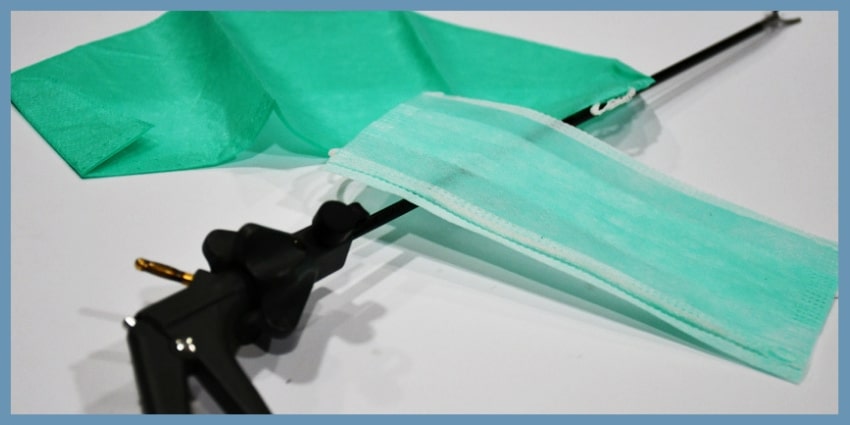
Dr Maran on Gallbladder Removal Surgery
Dr Maran routinely performs gallbladder removal surgery in Chennai. He is of the firm opinion that the removal of gallbladder does not cause any digestive problem after the gallbladder surgery. He outlines that the benefits of gallbladder removal surgery far outweigh the complications the presence of gallstones can cause.
Gallbladder Diet After Gallbladder Removal Surgery
What Diet should be followed immediately after a Gallbladder Removal Surgery?
The gallbladder surgeon or the gastric surgeon who performed the gallbladder removal surgery would prescribe you the diet for a few weeks after the surgery. You can gradually introduce more items in your food. Generally, after the removal of the gallbladder, most people have diarrhea and this is quite normal. Sometimes it can go on for a couple of months and this is not something to worry about. It is called postcholecystectomy diarrhea. Digestive problems after a gallbladder removal surgery are quite common. Keep your surgeon posted on the status of your diarrhea every time you visit.
What Diet should be followed after a Gallbladder Removal Surgery?
- After the gallbladder is removed, there is no storage for the bile secreted by the liver. The constantly produced bile now drains directly into the intestine only. So logically speaking, food that is rich in fat, and that which is heavy in quantity have to be avoided.
- As a general rule, an individual with no gallbladder should adopt a lifestyle where they eat smaller meals in a frequent interval. As a matter of fact, doctors recommend eating in small portions.
- Including fiber liberally in your diet can be beneficial on the whole. The most important factor is to watch what you eat.
- Check if you developed any digestion problem after having a specific food. If the same food is causing a problem once again, then it is better to avoid that specific food once for all.
- Go slow on junk food and fatty food. It is always better to avoid them totally for life. After all, you do not gain any nutritional value out of them but for making you obese and unhealthy.
- Generally, doctors recommend food rich in the complex carb, fiber, protein, and dietary fat, all in smaller portions after a gallbladder removal surgery.
Can you diet for weight loss after gallbladder removal surgery?
Any form of dieting induces a certain discipline in your food consumption pattern. So is it safe to go on an LCHF diet or another diet pattern after having the gallbladders removed? It is always better to take a cautious approach when you want to begin dieting. The best is to keep your surgeon in the loop and take his advice before beginning. Take food in small portions and check how your body responds. As a general rule, any diet type that promotes intermittent fasting for long hours should be avoided. This is because following such intermittent fasting we stuff our body with fatty food after the long hours of fasting. Since your body does not have storage forms of bile, food containing high fatty acids is going to cause extreme uneasiness during digestion. So avoid extreme dieting like a warrior diet in LCHF.
Consequences of Gallbladder Removal
When the gallbladder has been removed, there is no storage organ for the bile. Bile is constantly secreted in the liver and in a normal course, they are stored in the gallbladder in concentrated form. Since after the Gallbladder removal surgery there is no gallbladder, the bile secreted by the liver directly enters the small intestine in small quantities constantly.
Digestive Problems after Gallbladder Removal Surgery
After gallbladder removal surgery, a procedure called Cholecystectomy, there are changes to your digestive system and your body will gradually adjust to it. Some people may not see any changes to their digestive pattern and will carry on as usual. This pattern what we are now talking is after the post-operative diet plan (usually a week) the surgeon has handed to them. Additionally, some may report digestive problems even after their post-operative diet plan. Here are a few digestive problems one may encounter after having their gallbladder removal surgery.
Postcholecystectomy Diarrhea
After removing the gallbladder, most people experience diarrhea in the immediate aftermath of the surgery. This is quite normal as your body is adjusting to it. However few people might experience a continuation of this condition. If diarrhea continues even months after your gallbladder surgery, it is termed postcholecystectomy diarrhea. This is a common digestive problem that is reported after Cholecystectomy. The reason for this is, however, due to the continuous flow of bile into the intestine and there is no storage of bile.
The solution to Postcholecystectomy Diarrhea
The continuous flow of bile needs to be dealt with to arrest constant diarrhea. The Doctors will prescribe medications with “Bile Acid Binding Agents” to resolve this condition. Most patients report subsiding of diarrhea after this medication. The key is to let your surgeon know the condition and seek treatment for it.
Irritable Bowel Syndrome after Gallbladder removal surgery
People who already have IBS also can undergo gallbladder removal surgery. Sometimes for such patients, bowel movements become sloppy and uncontrollable after their surgery. They can have alternating bouts of constipation or diarrhea. White mucous with stool is another symptom that IBS is present. There is a slight possibility that people with a history of IBS even before their gallbladder removal surgery can get IBS once again.
The solution to IBS after Cholecystectomy
Medications with “Bile Acid Binding Agents” can resolve the IBS symptoms and can give relief. However, your surgeon might need to examine you and confirm the presence of IBS once again. Only after this, the surgeon would prescribe you the proper medication.
Sphincter of Oddi Dysfunction (SOD)
Sphincter of Oddi is a valve found in the second part of the duodenum. This is a common valve through which the bile and the pancreatic juice enters the digestive system. If this valve does not function properly it might close and may not let out the digestive juices into the small intestine. This condition refers to as SOD. A fraction of people who have undergone gallbladder removal surgery may also get SOD.
Symptoms of Sphincter of Oddi (SOD)
- Pain in the upper right or central part of the abdomen
- The pain may be moderate or severe and can last for 30 minutes
- The pain mostly occurs after eating
- Some people with SOD also get nausea and vomiting
The solution to Sphincter of Oddi (SOD)
SOD can also be treated with medication. Although, if the medications do not work, they can be definitely treated with a minor procedure called Endoscopic Retrograde Cholangiopancreatography (ERCP). As the name suggests, it is only an endoscopic procedure and may not require any hospitalization.
Dr Maran’s opinion on Digestive Problems after Cholecystectomy
Dr Maran has done many gallbladder removal surgeries and from his experience, he concludes that most digestive problems that occur after the surgery, are treatable using medications. He recommends that after the post-operative diet is over, the patient needs to try one new food at a time in small portions and find out how their digestive system is accepting. Chronic digestion problems are rare and if they occur they can be managed well if the patients exercise restraint when it comes to high-fat food. He further tells with conviction that removal of gallbladder for the presence of gallstone is much better an option when compared to the digestive problems which can occur.
Activities After a Gallbladder Removal Surgery
After a gallbladder removal surgery, many patients have one common fear. They often think about how normal or how active they can be after their gallbladder is removed. Here are certain facts to know as to the activity level after a gallbladder removal surgery or Cholecystectomy surgery.
How active can you be after a Gallbladder Removal Surgery?
“Very active” is the answer. Are there are exceptions to this rule? Generally speaking, stones in the gallbladder happen to individuals who have crossed forty years of age. Women are more vulnerable. The FFFF factor assumes significance here. If you are a Female, Forty Years, Fatty, and Flatulent you may run a higher chance. That being the case, the activity level of a middle-aged individual generally slows down in comparison to a 20-year-old. The metabolism level of a middle-aged normal individual is definitely slower than a 20-year-old. So, by performing a gallbladder removal surgery on a middle-aged individual, the activity level of that person will come back to the same level as before the gallbladder removal.
Performing the gallbladder removal surgery by laparoscopic means allows the patients to resume their normal activities in 3-4 days. On the other hand, by performing the gallbladder removal surgery by open surgery methods due to some complications, then the patients can resume their normal activities in 2-3 weeks time. But this time frame can vary with individuals. This time frame depends on the intensity and severity of the disease along with other medical and co-morbid conditions.
Generally, at 40 years of age, there will be some medical problem. Irritation of the stomach can occur as the metabolism slows down. So people who had their gallbladder removal surgery done should realize that their upset stomach in most cases has nothing to do with the surgery they underwent.
The immediate period after the surgery should be discounted as the patient who underwent the surgery would be resting and recouping as per the advice of the gastro surgeon. So this period isn't taken into consideration. Once the patient is able to resume normal activities, they can observe that the activity level is the same as before.

